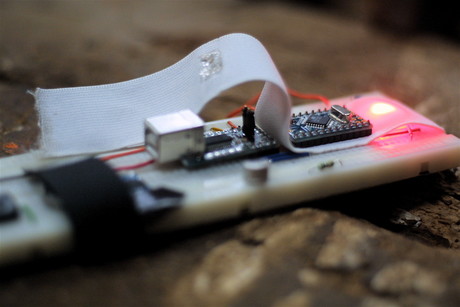Stretchable electronics: everything you need to know

Stretchable electronics is a term that conceals great diversity. Indeed, it is an umbrella term that refers to a whole host of emerging electronic materials, components and devices that exhibit some degree of mechanical stretchability.
Stretchable electronics has been in the making for more than a decade, but up to now it has been mostly a solution looking for a problem. Recent analysis by IDTechEx Research, however, finds that this is about to change. In its new report ‘Stretchable Electronics 2017-2027’, IDTechEx Research finds that the market for stretchable electronics will reach at least $600m by 2027.
The comprehensive report is the result of years of primary research in tracking and assessing technology and market developments for various stretchable electronics components and applications. It is said to provide readers with everything they need to know about the technologies, markets and players for the entire stretchable electronics industry.
Stretchable interconnects are the first to market
The seemingly simple interconnect is one of the first applications to be commercially launched. Here, specially formulated conductive inks or stretchable wires/yarns are used in electronic textile applications. The inks are also targeting other applications such as highly pliable PCBs, or long and stretchy medical electrodes (eg, ECG).
The same or similar inks can also be used as sensors by exploiting the resistance changes with elongation. The inks are often protected under an encapsulation or overcoat layer, which in itself is becoming an area of innovation for material suppliers.
In-mould application to take off after years of false starts
An expanding toolkit of materials compatible with in-mould electronics (IME) is also being developed. These materials need to withstand thermoforming and moulding conditions, including a one-off elongation event. Conductive inks and adhesives were the first IME-compatible materials, but the choice is now expanding to include transparent conductive films, sensors, actuators and so on. We expect 2017 to be the year when IME applications hit the market after years of false starts.
Stretch sensors find their niche
Stretch sensors are also finding use in a diverse array of applications. In fact, the industry is now in the brainstorming phase and we have already witnessed the identification of several promising niche applications beyond electronic textiles and robotic arms. These sensors come in a variety of formats and are based on different principles of operations.
PCB manufacturers get ready for stretchable electronics
PCB manufacturers are also developing processes to manufacture stretchable PCBs following the rigid island-stretchable interconnect approach which combines mechanical flexibility with the high performance of rigid electronics. Indeed, our team has seen numerous such companies all over the world prototyping samples and seeking ways to speed up the production process without compromising yield or circuit complexity. In parallel, manufacturers are also developing ways to further thin PCBs or develop novel materials to create stretchable and/or conformable PCBs.
Long tail of innovation in stretchable electronics
There is also a long tail of innovation on all types of stretchable electronic devices, including batteries, energy harvesters, displays, transistors, photovoltaics and so on. Many such devices are still in the early proof-of-concept phase and device complexity often suggests prolonged development times. Nonetheless, they will, soon or later, form a part of this emerging frontier of electronics.
Overall, this new technological frontier is on the cusp of growth, becoming at least a $600m market by 2027. The industry, however, cannot be painted with a broad brush and success will be in the detail. As the Stretchable Electronics 2017–2027 report reveals, some stretchable components will become success stories in the short to medium term, whereas others will remain largely an academic curiosity. The report also reveals that stretchable electronics will deliver compelling, at times enabling, value in some application sectors, while remaining an immature technology against many other options in other sectors.
Hidden semiconductor activity spotted by researchers
Researchers have discovered that the material that a semiconductor chip device is built on,...
3D reflectors help boost data rate in wireless communications
Cornell researchers have developed a semiconductor chip that will enable smaller devices to...
Scientists revolutionise wireless communication with 3D processors
Scientists have developed a method for using semiconductor technology to manufacture processors...










